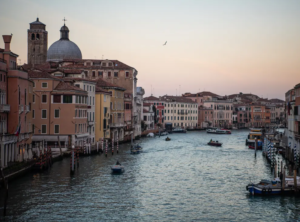ALBUQUERQUE, N.M. – Rachael Lorenzo calls it their “auntie laugh,” a powerful chuckle that lasts long and fills any space. Aunties are prominent figures in Indigenous culture who offer comfort when one needs help.
This report is part of “America After Roe,” an examination of the impact of the reversal of Roe v. Wade on health care, culture, policy and people, produced by Carnegie-Knight News21. For more stories, visit https://americaafterroe.news21.com/.
Aunties answer the phone when no one else does.
That’s what Lorenzo, who is Mescalero Apache, Laguna and Xicana, does as founder of Indigenous Women Rising, a national fund that covers the costs of abortions – and the traditional ceremonies that follow – for Indigenous people.
Since the reversal of Roe v. Wade a year ago, demand for the organization’s services has skyrocketed. The group funded 37 abortions in 2019, 600 in 2022 and over 300 in the first six months of this year. From January to June, it’s spent more to help people than in all of 2022.
“We’re investing more money into … airfare, bus, gas, child care, elder care, after care for the individual who’s getting an abortion,” Lorenzo said. “If there are special needs that they have, we do our best to fund that, as well.”
Abortion was never readily available to Native Americans, thanks to a federal law that has prohibited nearly all abortions at Indian Health Service clinics since 1976. That’s always meant traveling long distances for the procedure.
But now states with some of the largest Indigenous populations also have some of the strictest restrictions on abortion: places like North and South Dakota and Oklahoma, home to the Cherokee Nation, the second-largest tribe in the U.S. with over 300,000 enrolled members.
Never miss Indian Country’s biggest stories and breaking news. Sign up to get our reporting sent straight to your inbox every weekday morning.
Across the country, some 2 million Native Americans live in the 20 states with laws on the books banning abortion at 18 weeks of pregnancy or earlier, according to a News21 analysis.
“There are clinics closing, providers moving out of those states that we have served or serve, and so we’re seeing more people need to travel from very rural states in order to get abortion care,” Lorenzo said.
Add into the mix disproportionate rates of sexual assault and unintended pregnancy, a crisis of missing and murdered Indigenous women, high rates of maternal mortality, and poor access to preventative care and contraception, and the end of Roe has made a bad situation much worse.
“Roe has never been accessible for Native women,” said Lauren van Schilfgaarde, a tribal law specialist at UCLA. “When you add in the rates of violence and the complete gutting of tribal governments’ abilities to respond, you have a real dangerous recipe in which Native women have a lack of reproductive health.”
“Dobbs has exacerbated that,” van Schilfgaarde said.
The federal government provides health care to Native people as part of the treaty agreements for seized land. Those living on tribal lands or in big cities can use the Indian Health Service, or IHS, a federal agency that covers 2.6 million Native Americans and Alaska Natives across 574 federally recognized tribes.
However, the system is perpetually underfunded, forcing facilities to limit services.
On tribal lands, the clinics can be hours away by car – a trek that comes with a price tag for Native Americans, a quarter of whom live in poverty. And once they arrive, the clinic may or may not have gynecological or obstetric services.
Reproductive health care has always been “the lowest-hanging fruit for budget cuts,” said van Schilfgaarde, who is Cochiti.
The Hyde Amendment further restricted reproductive access for Indigenous women.
First approved by Congress in 1976, it banned the use of federal funds for abortion except to save the life of the mother. Exceptions were later added for rape and incest.
Yet exceptions at IHS facilities are rarely granted, even though Indigenous women are 2.5 times more likely to be raped than other women in the U.S., and some 34% of Native American women report having been raped at some point in their lives.
A study published in the American Journal of Public Health found that from 1981 to 2001, IHS performed 25 abortions. Another 2002 study found that 85% of IHS facilities did not have abortion services available or did not refer to abortion providers – even for women in permitted circumstances.
Dr. Antoinette Martinez, who is Chumash, is an obstetrics provider at United Indian Health Services, a federally funded clinic serving reservations in Humboldt and Del Norte, two northern California counties.
She can’t provide abortions because of the Hyde Amendment and has seen firsthand the effect of that.
“It really does create another hoop for young and middle-age Native women who do not desire pregnancy, who live either in a rural area or in a remote area,” she said. “Sometimes they come down from three hours away for care.”
In Oklahoma City, Trust Women was a go-to clinic for Indigenous patients seeking abortion care in a state where nearly 10% of the population is Indigenous. The state now has a strict abortion ban, and the facility’s treatment rooms hold unused chairs and boxes of medical supplies stacked in a corner.
States neighboring Oklahoma also have restrictive abortion policies. New Mexico is the nearest state that allows unrestricted abortion, and it’s an eight-hour drive away.
“It’s obviously a really egregious violation of people’s rights and dignity to not be able to access health care where they live,” said Kailey Voellinger, former clinic director of Trust Women in Oklahoma City.
Lorenzo founded Indigenous Women Rising after their own emergency abortion 10 years ago. At the time, they were a 23-year-old graduate student and parent to a toddler. The doctor told Lorenzo they had an unviable pregnancy but would have to “wait it out.”
Lorenzo figured there must be other Native people with similar experiences who needed help.
Jonnette Paddy, a member of the Navajo Nation, oversees the organization’s abortion fund and said that post-Roe, most states served are those with abortion restrictions.
“So we assist in Arizona. We assist in Oklahoma, North and South Dakota, Texas,” Paddy said.
In just the first six months of 2023, the fund has distributed $180,000 to support patients. That’s compared with $110,000 in all of 2022.
Indigenous Women Rising is one of the bigger community groups in the abortion realm but not the only one.
Following an outbreak of youth suicides in Indian Country in 2015, Sarah Adams, who is Choctaw and lives in Moore, Oklahoma, co-founded Matriarch to provide suicide prevention education and resources to the community.
Today, the organization provides critical services – including help with abortion care – that the tribal government is unable or unwilling to provide. Its members help people schedule appointments at out-of-state abortion clinics, fund procedures and assist with child care and meals.
Adams noted that the lack of abortion access for Indigenous women has not even come up among most tribal leadership, which is predominantly male.
After Roe was overturned, the Suquamish Tribe in Washington state was the only one to speak out publicly, issuing a statement saying, “Our bodily integrity and our right to make decisions over whether or when we bear children are foundational to human dignity.”
“We’ve always known that the community is really the only thing that is protecting us, and that we’ll find a way,” Adams said. “We’ll find ways to make sure that we get the health care that we need.”




